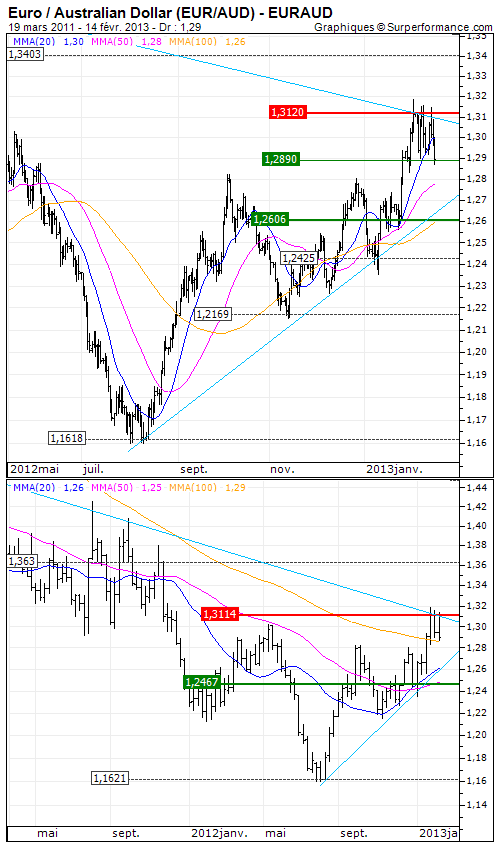Euro / Australian Dollar (EUR/AUD) : The RBA is ready to act
By Mathieu Burbau
To answer to a slowdown in China, one of the major trading partners of the island continent, but as well to the Eurozone turnmoil and uncertainty about the U.S. budget, the RBA has lowered the interest rates from 4.25% in November 2010 to 3% in December, reducing the interest of carry trade.
Although it opted for the status quo during its last meeting in early February, the Australian’s central bank has however said that the inflation level allowed new flexibilities, which it would use if necessary. While recognizing that risks have decreased, the tone remains particularly accommodating.
At the macro level, growth is still high but slowed down to 3.7% year on year in the third quarter of 2012 and the unemployment rate is stabilized in its highs since the beginning of 2010 (5,4%). Especially, the trade balance is in deficit since February 2012 whereas the Australian economy mainly relies on its exports of raw materials. In addition, the governor Glenn Stevens had already warned in December that “recent data confirm that investments peak made by the mining industry are approaching”, which should put pressure on growth in 2013 and encourage the central bank to act.
Graphically, the EUR/AUD is in a clear bullish trend for a semester, showing the difference of monetary policy between an accommodating RBA and an ECB looking for a strong Euro. While the currency war is getting stronger, the exchange rate should now bounce on our 1.2890 level toward new objectives. So, we are now bullish below 1.30 and are targeting a comeback to the AUD 1.40 in 2013.



